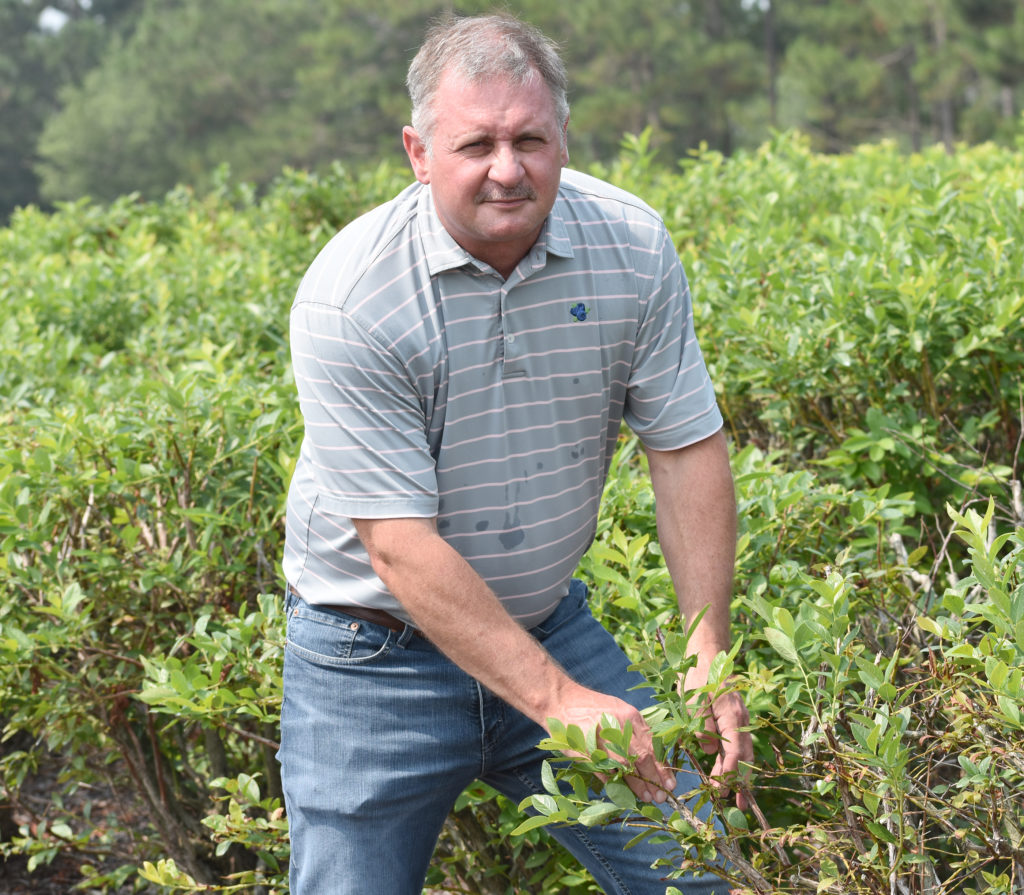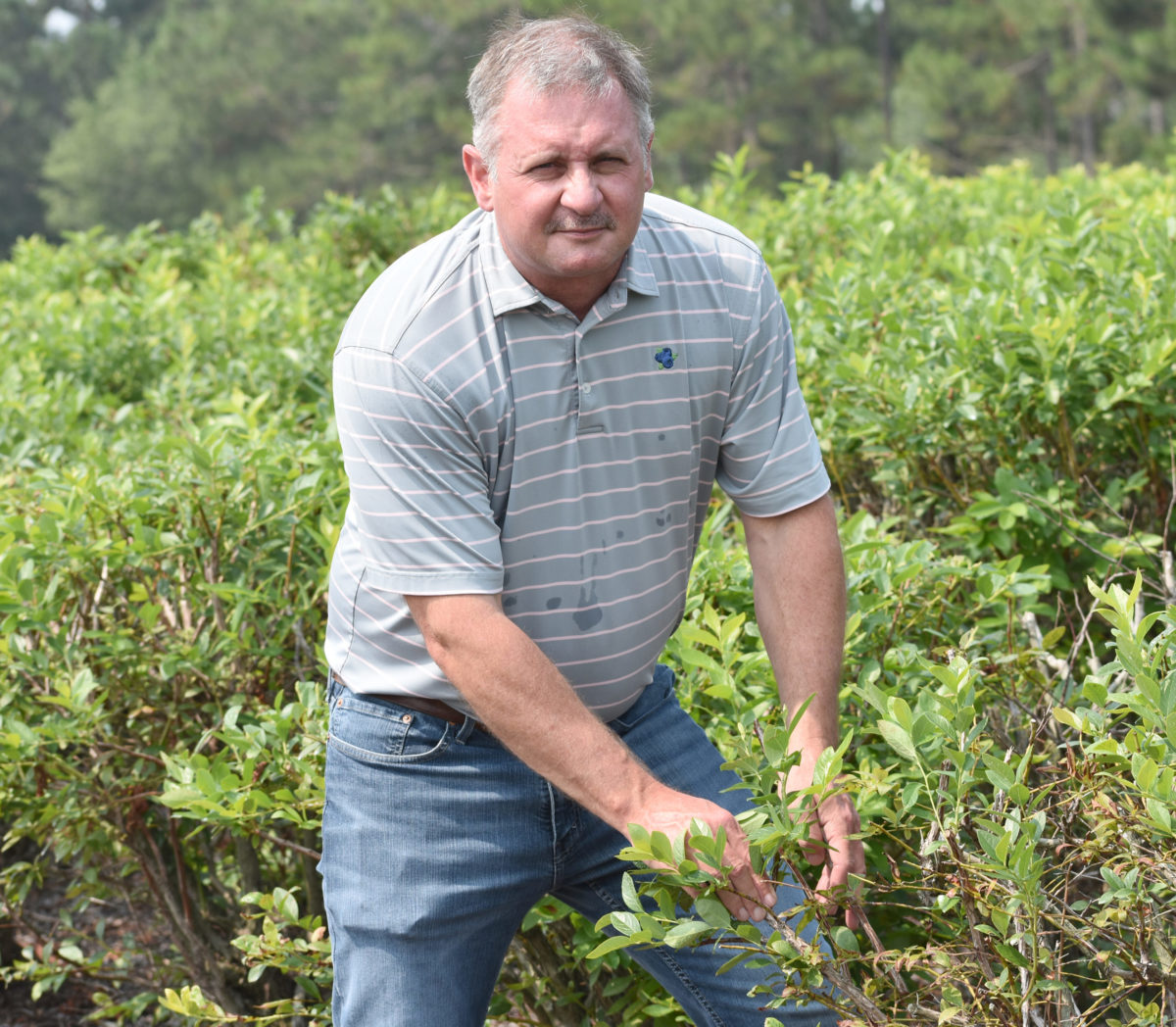By Clint Thompson
One of the largest and most productive blueberry growers in Georgia is concerned about the obstacles that will challenge his ability to remain sustainable in the future.

That is why Kevin Eason voices his concerns to those who will listen. He aims to educate legislative leaders about the issues that challenge his sustainability as a farmer. Eason also is willing to provide potential solutions for those lawmakers in charge. He owns and operates Kevin Eason Farms in Alma, Georgia.
LABOR ISSUES PROBLEMATIC
Eason’s most immediate challenge is labor.
“At the start of this past season, there were several delays through the H-2A process,” Eason says. “Every year, there’s some kind of struggle, but this year it was a little different. More specifically, the problem we were having was the consulate in Mexico would normally turn around and give us a visa appointment in just a few days. But, this year, there were three- and four-week delays getting appointments. It was not something we were accustomed to running into. On top of that, another major hurdle was we found out in mid-January that our labor rate was increasing by 14%. That was a shock to us.”
It was an unpleasant surprise considering Eason employs between 100 and 200 H-2A workers every season. While harvesting blueberries constitutes a lot of his employees’ responsibilities, they also pull weeds, prune and replant fields when needed. Eason must guarantee his workers a certain number of hours to employ them.
“The whole H-2A process needs to be revamped, and we have been saying this for years,” he says. “It’s so cumbersome. It’s expensive. It’s not very flexible. We’ve asked for reform, but no one seems to be interested in making a move on it.”
AUTOMATION IS THE FUTURE
An obvious solution to labor problems is to have a process in place where hiring a foreign workforce is not needed. That remedy would be automated harvesters. The more of those that are developed and improved, the less reliant growers like Eason will be on needing a workforce.
“There’s been a lot of time and money spent on improving varieties and production. If we can continue pushing forward with that, maybe move more toward mechanization where our harvest expense isn’t such a large portion of our costs, that would be a big help,” Eason says. “If we can work that out, that’ll go a long way toward helping us stay in business.”
A concern is that not all varieties are suited for machine harvest. There is also the expense factor.
“The costs of mechanized harvesters have increased tremendously. In 2014, I bought a new harvester for $140,000. That same harvester today is probably $220,000,” Eason says.
NEW CULTIVARS NEEDED
If research can modify and improve those harvesters, it will help Eason remain profitable. So, too, will new blueberry cultivars. He says the University of Georgia and fellow growers have discussed what priorities need to be placed above others when focusing on new cultivars. What traits do producers desire? Can they produce a firmer berry that will not split when it rains?
Other blueberry-leading states have been instrumental in spearheading breeding research as well.
“I’m a member of the Michigan Blueberry Growers Cooperative. They’ve spent a tremendous amount of money trying to breed their own proprietary varieties,” Eason says. “They have partnered with the University of Florida to put their heads together to try to come up with some better varieties to grow in South Georgia and North Florida.”
TRADE OBSTACLES
The other main obstacle impacting Georgia blueberries is imports from Mexico. This has been a problem for decades that has intensified in recent years.According to Eason, projections show that Mexico will continue to increase its blueberry production and pounds entering the United States.
“If anything, Georgia may fare a little better than Florida. I feel like the growers in Mexico will be targeting (Florida’s) window more so than Georgia,” says Eason. “Still, it’s going to bleed over into the Georgia crop.”
He is also concerned that growers are not competing on a level playing field. “There are certain chemicals that we can no longer spray on blueberries,” says Eason. “It’s my understanding that in Mexico they can still spray those same chemicals.”
ENCOURAGED BY LEADERSHIP
Eason conveyed some of these concerns to U.S. Sen. Jon Ossoff (D-GA) during a visit in March. He entered the conversation discouraged but left encouraged.
“Sen. Ossoff was very helpful with some issues that had come up and getting those resolved for us. He actually came down and visited me and a couple of other growers,” Eason says. “He asked a lot of questions about the H-2A program, about housing and how the process works. It was good to have some form of government representation from Georgia interested in the process. We just keep our fingers crossed and hope we get some traction with it.”
RECORD CROP
Despite what some might consider an ominous future, Georgia blueberry growers enjoyed a prosperous year. Eason said the crop this past season was the largest that Georgia has ever seen.
“It was quite large. We had such a mild winter, so not a lot of damage from the cold. That was something we had been fighting the past few years with these late freeze events,” Eason says. “And the crop was early this year. In Alma, we had people picking March 27. Typically, our start date would be April 10. We were roughly two weeks early.”
The mild winter contributed to the early start, as there was not a lot of damage to the early ripening fruit. The Christmas hard freeze event also did not affect Georgia’s primary varieties. The weather, for the most part, helped growers keep major insect pests and diseases in check.
“The universities have done a pretty good job at providing us recommended spray guides to help us combat most of the problems. In the past few years, we have developed some issues with anthracnose,” Eason says. “The weather dictates a lot of the problems we’re going to face during the season.”










